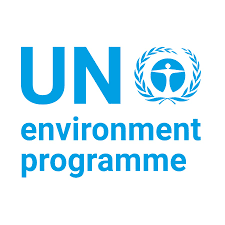CURRENT AFFAIRS
Get the most updated and recent current affair content on Padhaikaro.com
WWF/UNEP Report -2021 & Sonitpur Model
- Vaid's ICS, Lucknow
- 06, Dec 2021

Why in News?
A report titled, A future for all – the need for human-wildlife coexistence, was recently released by the World Wide Fund for Nature (WWF) and the UN Environment Programme (UNEP).
Highlights of the Report:
- Conflict between humans and animals is one of the main threats to the long-term survival of some of the world’s most iconic species.
- Globally, conflict-related killing affects more than 75 per cent of the world’s wild cat species. It also affects polar bears and Mediterranean monk seals as well as large herbivores such as elephants.
- Global wildlife populations have fallen an average of 68 per cent since 1970.
Indian scenario:
- Over 500 elephants were killed between 2014-2015 and 2018-2019, mostly due to human-elephant conflict.
- During the same period, 2,361 people were killed as a result of conflict with elephants.
- India will be most-affected by human-wildlife conflict because it had the world’s second-largest human population as well as large populations of tigers, Asian elephants, one-horned rhinos, Asiatic lions and other species.
What needs to be done?
Completely eradicating human-wildlife conflict is not possible. But well-planned, integrated approaches to managing it can reduce conflicts and lead to a form of coexistence between people and animals.
Sonitpur Model:
- In Sonitpur district in Assam, destruction of forests had forced elephants to raid crops, in turn causing deaths of both, elephants and humans.
- In response, WWF India had developed the ‘Sonitpur Model’ during 2003-2004 by which community members were connected with the state forest department.
- They were given training on how to work with them to drive elephants away from crop fields safely.
- WWF India had also developed a low-cost, single strand, non-lethal electric fence to ease the guarding of crops from elephants.
- Afterwards, crop losses dropped to zero for four years running. Human and elephant deaths also reduced significantly.
Advisory for management of Human-Wildlife Conflict (HWC) approved by Standing Committee of National Board of Wildlife (SC-NBWL):
- Empower gram panchayatsin dealing with the problematic wild animals as per the WildLife (Protection) Act, 1972.
- Utilise add-on coverage under the Pradhan Mantri Fasal Bima Yojna for crop compensation against crop damage due to HWC.
- Augment fodder and water sources within the forest areas.
- Other measures:The advisory prescribes inter-departmental committees at local/state level, adoption of early warning systems, creation of barriers, dedicated circle wise Control Rooms with toll free hotline numbers which could be operated on 24X7 basis.
Facts for Prelims:
Kisan Sarathi:
- Digital Platform Kisan Sarathi launched to facilitate farmers to get ‘right information at right time’ in their desired language.
- Farmers can avail personalised advisories on agriculture and allied areas directly from scientists through the digital platform.